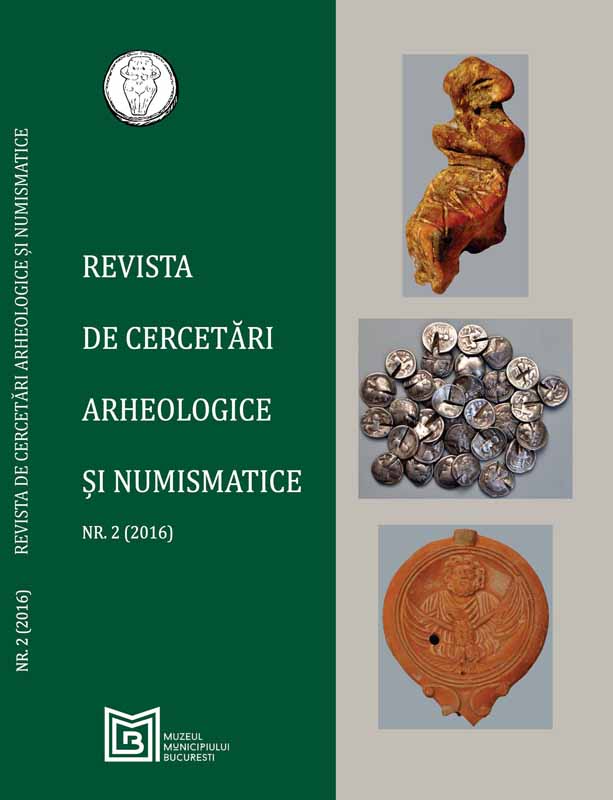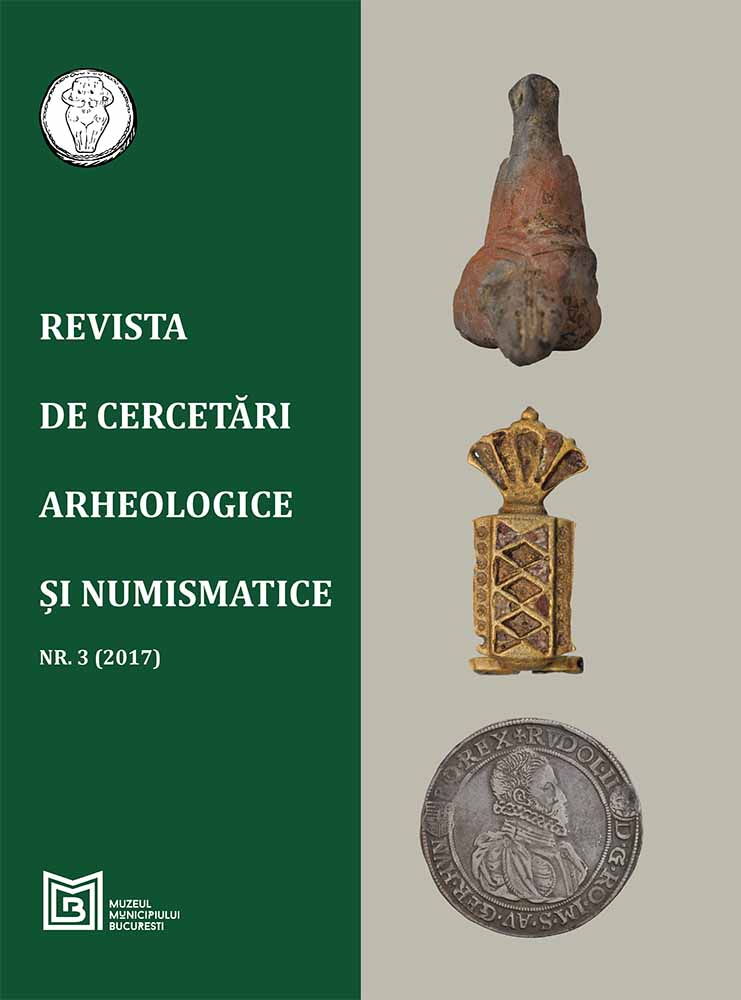Author(s): Gabriel Mircea Talmaţchi / Language(s): Romanian
Issue: 4/2018
The author draws attention to some of the Istrian bronze pieces of the Apollo and Demeter series from the Autonomous Age. The starting point of the investigation is the appearance on the reverse of the city legend IΣTPIHI (at Apollo) and IΣTPI/HI (at Demeter), which would express (in the dative case) a fact or a dedication made to Istros. Generally, on the reverse of the autonomous period types, the city’s name can be encountered as IΣT, IΣTPI and IΣTPIH. This particular form of the legend IΣTPIHI does not appear in any known inscription (funerary stele, decree, etc.) from Istros or which originates from Istros. The author, by analogy with other monetary types struck at Istros, establishes a possible chronological correlation. Thus, the closest analogy of the legend (its general form of presentation, the arranging the letters, or their height, etc.) appears on the silver drachmas with the letter A on the reverse under the dolphin. Consequently, the chronological interval of their issuing would be between the mid and the second half of the 3rd century BC. This is valid for the debut of the Apollo series, for the first Demeter types (with the eagle on the dolphin on the reverse) and for the series with a wreath of wheat ears. For the Apollo series, that reverse die was reused during the second part of the Hellenistic period (towards the end of the 1st century BC and the beginning of the 1st century AD) when such specimens are struck at irregular intervals (and in any case very difficult to individualize and chronologically phased at this stage of research). On such issues, different obverse dies were used almost every time (with slightly modified details from piece to piece). The final obverse die produced would lead us to Augustus if we relate to his representation in Italian monetary iconography. Various sources mention the existence of an Imperial cult at Istros from the time of Augustus.The Imperial cult originates from the Hellenistic cults, from the dedications made to the benefactors. Their continuity is marked by the changing of the addressee, in this case Augustus.In the Hellenistic period (especially in the 2nd-1st centuries BC), the situation of the colonies on the Western Black Sea coast was often precarious, the recorded political and military events suggesting a difficult economic life. At Istros, there are frequent concerns and attempts to eliminate the many "thieves" stealing resources in the territory (especially cereals). This context has led to calls for the benevolence of some favorable divinities, specific to ancient times (as was Apollo), or one defining success in agriculture (as was Demeter). At one point, in parallel with Apollo, a very important new god emerged, imposed by the socio-political and religious reality, not just by the imaginary (Augustus and Rome in general). The monetary issues presented by us seem to generally begin with the second half of the 3rd century BC, their issuing being repeated occasionally until the end of the Hellenistic era. Among these autonomous monetary series a few or maximum ten copies are known today. They seem to be, in our sense, homage issues or were made to mark certain events or local religious celebrations. Towards the end of the 1st century BC and the beginning of the 1st century AD, a period of new pursuits is noted, of stylistic changes of classical portraits and the search for symbols specific to the new realities.
More...











